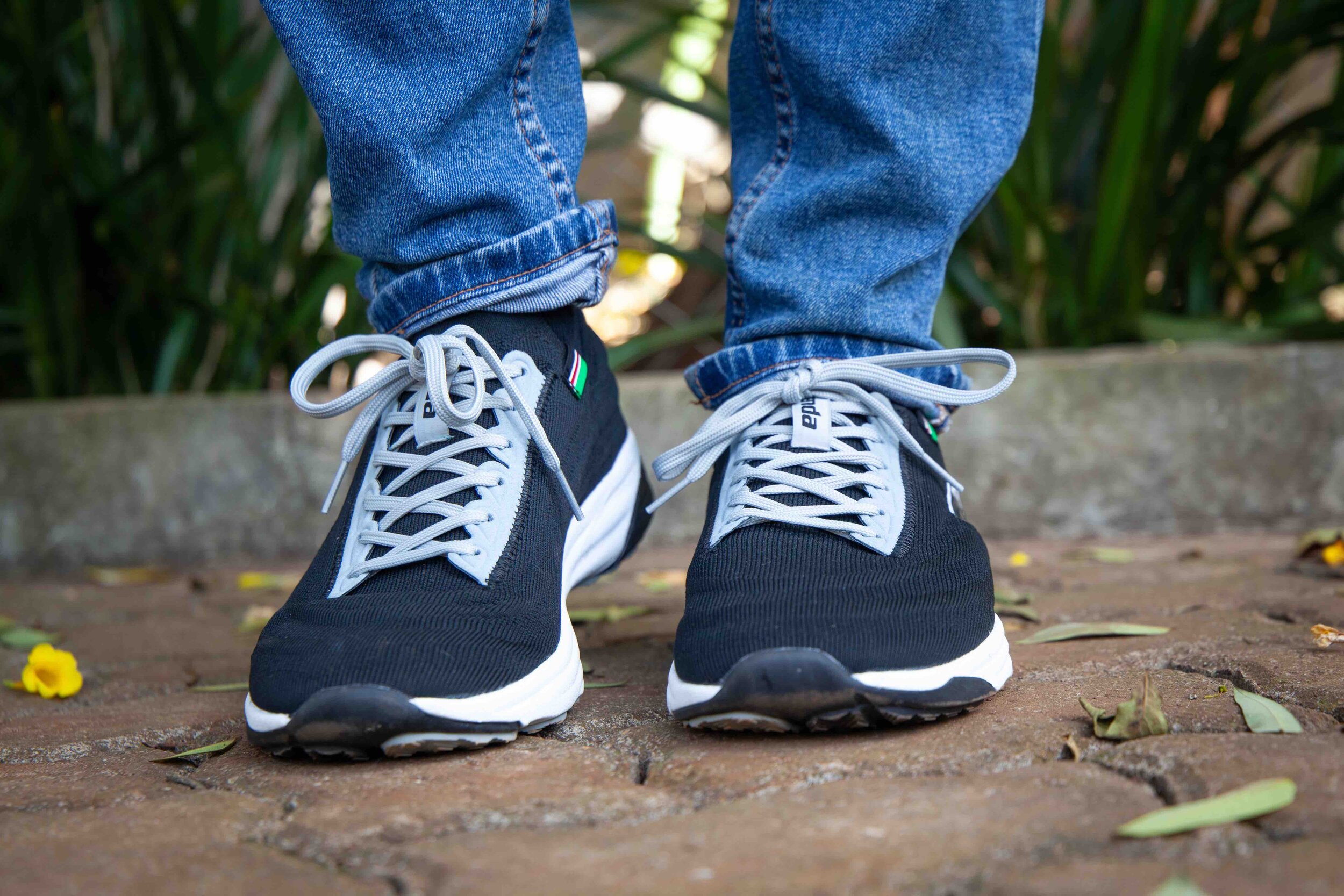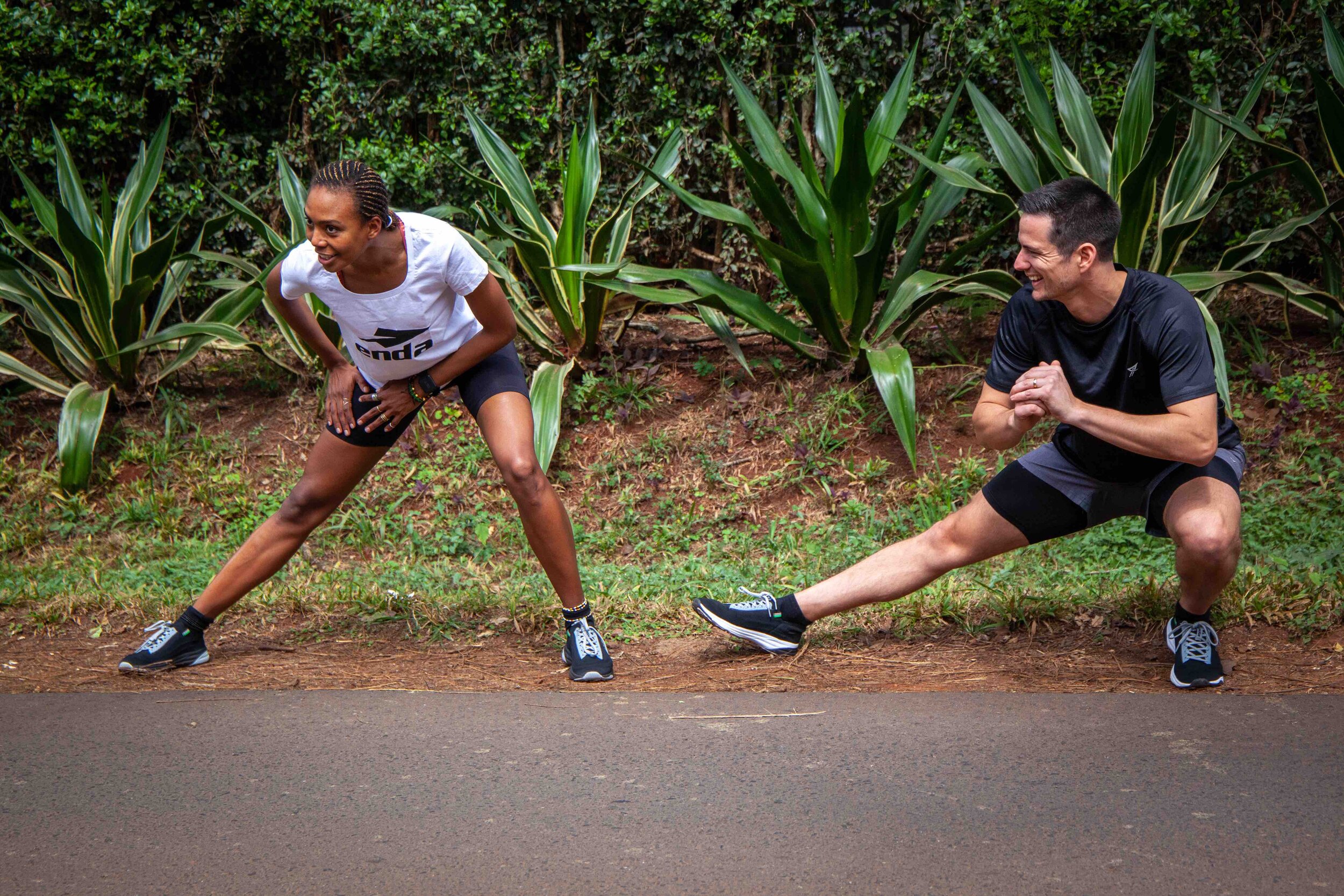Review: The new Enda Lapatet
We speak to Weldon Kennedy, co-founder of Kenyan running shoe brand Enda, and try out their updated daily trainer | Photography by Weldon Kennedy on behalf of Enda
Snapshot
Item: Men’s Enda Lapatet (the updated version, on sale from July 2021)
Price in Kenya: 12,000 KES (110 USD)
Terrain: Road / light trails
Stack height: 24 mm
Drop: 6 mm
Tested weight: 300 g / 10.6 oz (men’s size 10.5 UK)
Designed for: Easy and long runs, with lots of cushion and a reworked, sock-like knitted upper
As a manufacturer of high-performance running shoes in a country that has produced some of the world’s best endurance athletes, Enda’s existence makes a lot of sense. This was a sentiment shared by over a thousand backers around the world who helped to bring the project to life through Kickstarter in 2016, enabling the creation of the company’s first shoe, the Iten. Enda have made great strides over the years since, and they have now released a new version of their daily trainer, the Lapatet.
Enda’s crowdfunded origins are fitting for a company with an open commitment to the spirit of Harambee — Kenya’s official motto, meaning ‘Let’s all pull together’ in Swahili. And it’s clear that their mission in Kenya stretches beyond the development of athletic shoes and apparel. Although the majority of their materials are imported, the shoes are built in a factory near Mombasa on the Kenyan coast. As well as creating jobs locally, Enda are determined to change the way that Kenya is perceived globally, by making the ‘Made in Kenya’ tag synonymous with quality and creativity. They also commit 2% of their revenue to a range of local community development initiatives, and are the first Climate Neutral Certified company in Africa. They were certified as a B Corporation in November 2019, too, in recognition of their positive social and environmental impacts.
Across the Enda website is a promise to help you ‘Run Kenyan’. In the design of their shoes, and in the advice they offer for training, they draw lessons from top distance runners in Kenya’s North Rift Valley. One of these lessons is to frequently vary the speeds and distances of training sessions, and each model of their shoes is designed to help you get the best out of these different sessions. Their first, the Iten, is a lightweight trainer built for fast shorter runs, while the more cushioned Lapatet is geared more towards easy and longer runs. But the lessons from Kenyan athletes run much deeper than this; their shoes are also designed to encourage a more efficient running form, as Enda’s co-founder, Weldon Kennedy, explained:
‘The Lapatet is a cushioned trainer — it’s designed for an efficient gait. If you look at the way that Kenyan runners run, they’re almost always landing under their centre of mass. When the foot strikes, their knee is slightly bent and always under their body and pushing back. So it’s very efficient — land and push back. We wanted to design the Lapatet to help people discover that running gait.’
The name ‘Lapatet’ is also a nod to Kenya’s running heritage; it’s a Kalenjin word for ‘running’ used by many athletes in the North Rift. In the same way that chefs use the French language to describe working in a kitchen, Enda feel that runners around the world should be using Kalenjin to describe running, because it’s how the best practitioners in the world talk about the sport.
The new Lapatet, on sale from the end of July, is a modification of the original version, based on feedback from Enda’s running community. The most significant alteration is to the shoe’s ‘Waveknit’ upper, which is now one seamless piece. The upper on the previous version had quite a thick seam running across the toe box.
‘We wanted to create a sock-like, form-fitting upper on the Lapatet’, Weldon said. ‘Many running shoes are designed with lots of air in shoe, so when you wiggle your toes up and down, you’re wiggling into air. But that’s not really how you run. When you run, you dorsiflex your toes — when you land, your toes are naturally back, it’s just the way your foot moves. If you’re wiggling into air, the shoe is static, which is disconnecting you from the way your body wants to run. So we wanted to create a sock-like upper that naturally moved with your foot.’
The reworked upper is meant to be more breathable and have more stretch in the right places. It should also ‘feel like a sock with a pad attached to it’, as Weldon put it. Enda call it their Waveknit because there are long ridges across it, which provide a bit of extra structure. The design was inspired by natural waves across various Kenyan landscapes — the wind blowing through the grasslands of the Maasai Mara, the clouds surrounding the peaks of Mount Kenya, and the waves breaking over the coral reefs in Kilifi.
Enda also integrated a lacing system with an internal saddle — a non-woven layer of fabric running under the arch of your foot and along the two sidewalls of the foot, which provide a nice lockdown. Because it’s designed as a daily trainer, there’s plenty of cushion, with 24 mm of high-rebound EVA under the forefoot, and a 6 mm heel-to-toe drop.
As with their first-generation shoe, the Iten, there are lots of subtler Kenyan design elements around the Lapatet. The Enda logo itself is a stylised image of a spear, adapted from the Kenyan flag. Above the logo on the ankle collar of the shoe are two tags with Kenyan colours, and the design on the pull tab on the heel is inspired by the geometric patterns of traditional kanga fabrics. On the bottom of the sole, running across the decoupling groove, is a topographical map of the Rift Valley, and underneath the arch is the word ‘Harambee’. Each of Enda’s colourways is inspired by a Kenyan landscape, culture or animal, and the latest version of the Lapatet was inspired by the Somali Ostrich.
First impressions on the road
Aesthetically, in my view, the reworked knitted upper of the updated Lapatet is an improvement on the original version, which had the big seam across the toe box. The changes to the upper also mean the shoe is quite light for a daily trainer.
Generally I was impressed with the build quality of the shoe; Endas have been praised in the past for their durability, and I expect the Lapatet to have a long lifespan. The stretchy upper is sock-like as described, and very easy to slip into. The internal saddle ensures a secure fit around the laces, and I had plenty of room in the toe box. I usually fluctuate between UK size 10 and 10.5 for my running shoes, and I opted for the latter for the Lapatet. In hindsight, I’d probably be best suited to a 10 for a more snug fit, with room to spare in the forefoot. I could have done with a more secure fit in the heel, too, which I felt was a bit loose from time to time as I was running.
Otherwise, after a mix of short runs on tarmac roads and light dirt trails, I was confident that the shoes would serve me well over longer distances. They felt comfortable with a good amount of energy return from the foam under the midfoot, and had plenty of grip off the tarmac, too.
The updated Lapatet is available now on the Enda store online, ke.endasportswear.com.






